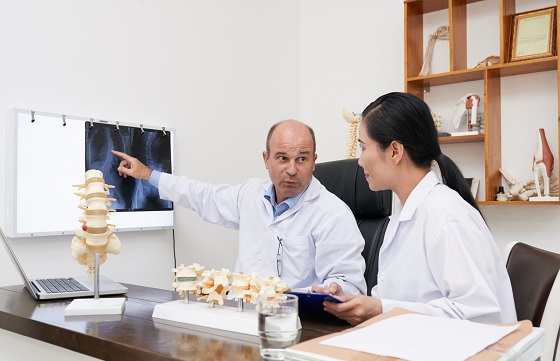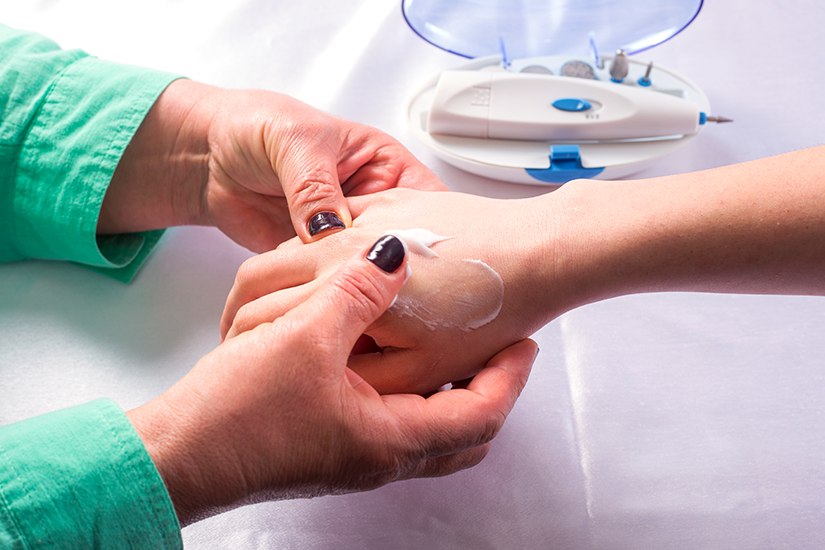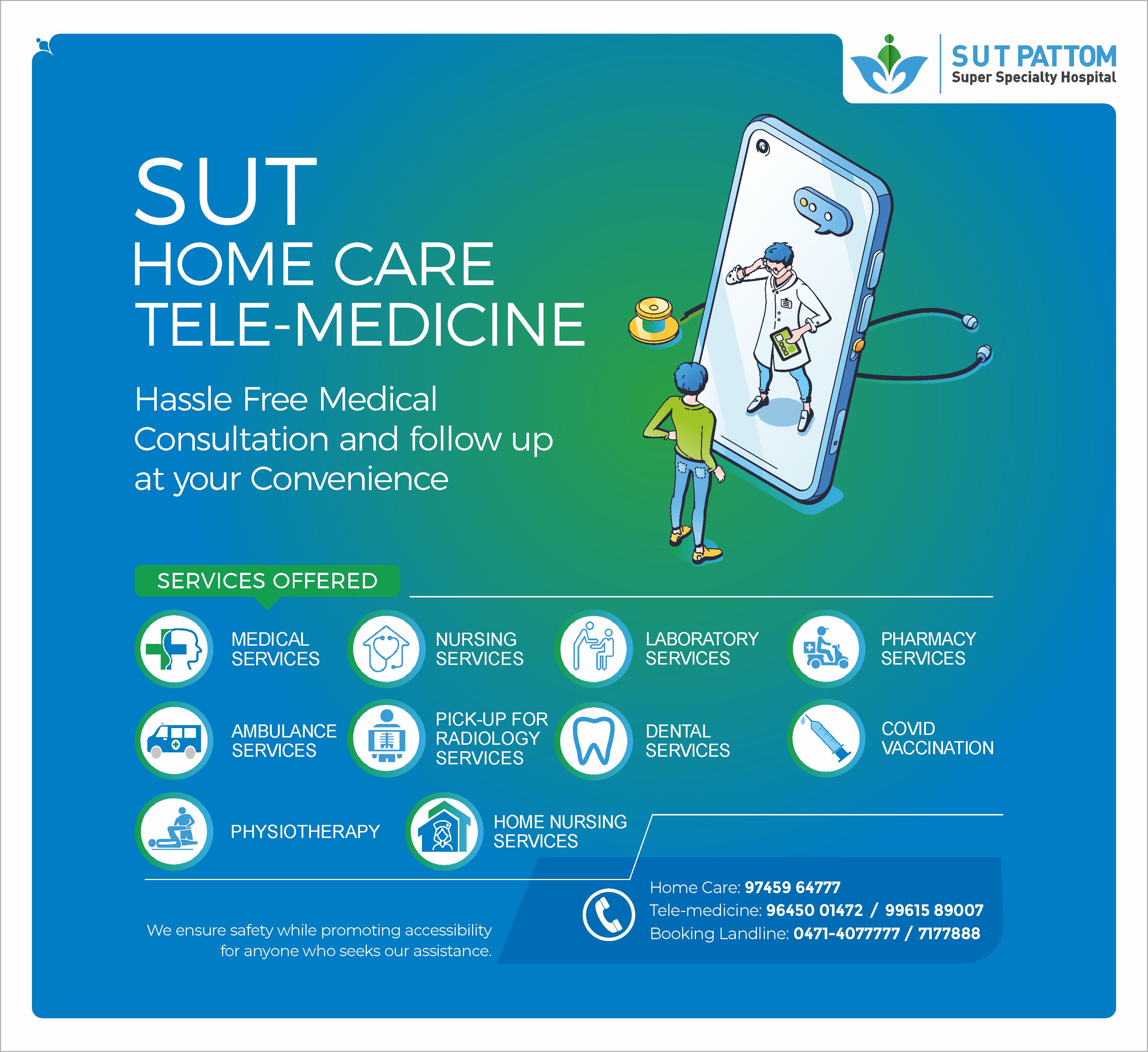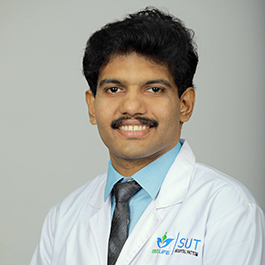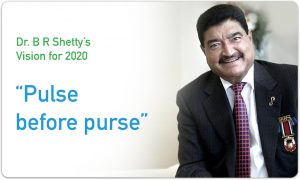- Emergency Ambulance Services
- 8606811111
- 0471-4077777, 0471-7177888
- gro@sutpattom.com
Advancement in bone tumor treatment
Dr. Subin Sugath, Orthopedic Oncosurgeon, SUT Hospital, Pattom
What is a bone tumor?
Normally all human cells die after completing their life cycle. An ability of a cell to overcome this programmed cell death makes it a tumor. Such cells that arise from bone cause bone tumors.
Are bone tumors rare?
Yes, bone tumors are rare, accounting for less than 2% of all types of tumors combined.
What are the types of bone tumors?
Bone tumors can be benign or malignant. Benign tumors are usually not life-threatening. But malignant bone tumors are more aggressive, can spread to other parts of the body, and can be life-threatening.
Are bone tumors more common in any particular group of people?
Bone tumors usually affect two age groups. Primary bone tumors usually affect children in their second decade (10-20 years). Bone tumors that are caused by tumors in other parts of the body, such as stage II lung cancer or breast cancer, usually affect older people. Osteosarcoma is the most common malignant tumor affecting children.
What is the most important step in bone tumor treatment?
The most important step in managing a bone tumor is to make a proper diagnosis before starting treatment. This is possible by performing a biopsy, which is a test in which a small amount of tissue is taken from the tumor for evaluation. Biopsies should be performed in centers capable of performing precise procedures, where biopsies can be planned in a way that does not affect the final surgery. Most of the time a simple needle biopsy is enough to identify the cause of the tumor.
How are bone tumor treated?
Benign tumors can be treated in an area where the natural bone and joints are preserved. Surgical procedures are planned to remove malignant tissue without disturbing unaffected areas as much as possible.
Chemotherapy along with surgery is the main treatment for malignant bone tumors such as osteosarcoma and Ewing’s sarcoma. After 2-3 cycles of chemotherapy, the patient is considered for surgery. Prior to the 1990s, amputation was the treatment of choice.
What are the advancements in bone tumor treatments?
The use of more potent chemotherapeutic drugs, higher resolution MRI, and improved surgical techniques, we have now moved from the era of amputation to the era of limb protection. Here only the affected bone is removed instead of the affected limb. After the tumor is removed, an artificial implant is used to reconstruct the bone. The patient is able to perform all activities of daily living except sit on the floor. This implant costs between Rs 60,000 and Rs 1,00,000 depending on the length of tumor removal. Earlier such surgeries were not available in Kerala. But since 2002, these surgeries are being performed at selected centers in Kerala at international standards and at nominal rates.
What is the latest in bone tumor treatment?
Even if an implant is used, it cannot be guaranteed that it will last for a lifetime. Science has not yet been able to invent an implant material that is the equivalent to bone in the human body. It was during the search for that new methods of treatment were started. In some cases, we are able to perform surgeries that completely preserve the joints of the human body. Today, there is a treatment method in which the same bones are reused after the complete removal of the cancer cells in the tumors. Two methods are used to destroy these cells. This process is usually done by radiation or using liquid nitrogen. After cleaning with this method, we are able to save the joints with the technology of putting the same bones back. At this point, the patient does not feel any discomfort from the implant. Another excellent treatment method is computerized navigation guided tumor resection. At the time of surgery, we get a three-dimensional view of the area, so that we can remove the tumor very precisely. Advances in science have now made 3D prints of implants and jigs are available. These advances have paved the way for a major change in the field of surgery. Medical science has evolved from the 90’s practice of amputating limbs to preserving those limbs. If bone cancer is diagnosed before it spreads to other organs, it can be best treated at these centers.

